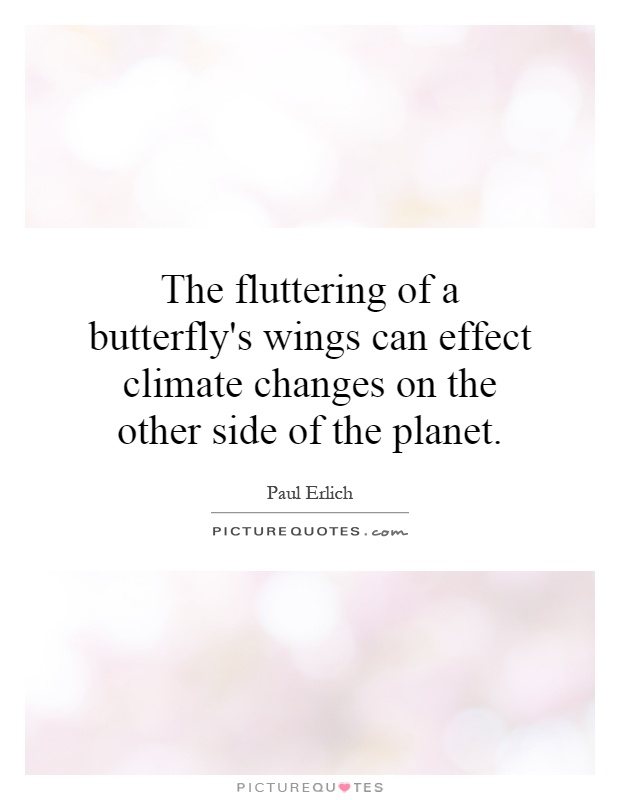The fluttering of a butterfly's wings can effect climate changes on the other side of the planet

The fluttering of a butterfly's wings can effect climate changes on the other side of the planet
Paul Ehrlich, a renowned biologist and environmentalist, is best known for his work on population dynamics and the impact of human activity on the environment. One of his most famous theories is the concept of the butterfly effect, which suggests that small changes in one part of a system can have large and unpredictable effects in another part of the system. This idea is often illustrated by the metaphor of a butterfly flapping its wings in one part of the world and causing a hurricane on the other side of the planet.In the context of Paul Ehrlich's work, the idea that the fluttering of a butterfly's wings can affect climate changes on the other side of the planet is a powerful reminder of the interconnectedness of all living things and the delicate balance of the Earth's ecosystems. Ehrlich's research has shown that even seemingly insignificant actions can have far-reaching consequences, and that human activity has the potential to disrupt the natural systems that support life on Earth.
For example, Ehrlich has studied the impact of deforestation on climate change, showing how the loss of forests can lead to changes in temperature, precipitation, and weather patterns around the world. By cutting down trees, humans not only release carbon dioxide into the atmosphere, but also disrupt the water cycle and reduce the Earth's ability to regulate its own climate. These changes can have devastating effects on ecosystems, wildlife, and human communities, leading to more frequent and severe natural disasters such as hurricanes, droughts, and floods.
Ehrlich's work has also highlighted the importance of biodiversity in maintaining the health of the planet. He has shown that the loss of species can have cascading effects on ecosystems, leading to imbalances in food chains, disruptions in nutrient cycling, and increased vulnerability to disease. By protecting and preserving biodiversity, we can help to ensure the stability and resilience of the Earth's natural systems, reducing the risk of catastrophic climate changes and other environmental crises.












 Friendship Quotes
Friendship Quotes Love Quotes
Love Quotes Life Quotes
Life Quotes Funny Quotes
Funny Quotes Motivational Quotes
Motivational Quotes Inspirational Quotes
Inspirational Quotes